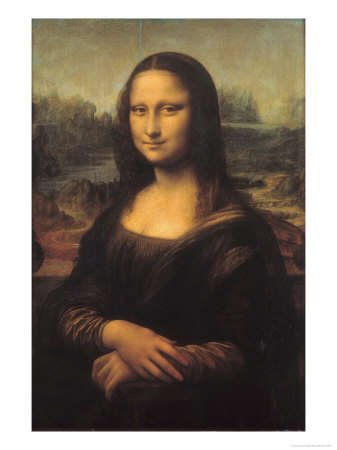Truth behind the painting of Mona lisa .......;
Mona Lisa
Leonardo’s renowned portrait, made with oil on poplar; painted around 1503. There is speculation as to who commissioned the work, but it’s clear the patron did not receive the finished painting, because Leonardo took it, along with a portrait of John the Baptist, when he moved to France in 1516. King Francis I bought the portrait, and during the next several centuries it was housed in various sites, eventually coming to the Louvre. We do not have any of Leonardo’s notes about the woman portrayed—not even her name. In 1550, almost thirty years after his death, Giorgio Vasari wrote a biography of Leonardo in which he refers to this piece as Mona Lisa, or Madonna Lisa, which simply means ‘‘Madame Lisa.’’ Mona means ‘‘Lady,’’ so the picture is of ‘‘Lady Lisa.’’ Vasari explains that the woman was Lisa Gherardini del Giocondo, wife of Francesco del Giocondo, a silk merchant, which is why many Italians call the painting ‘‘La Gioconda.’’
The picture was not particularly praised or prized until the nineteenth century. Then, as Romantics reveled in the ‘‘feminine mystique,’’ Mona Lisa came to represent everything marvelous and mysterious about women. To Walter Pater, for example, she represented the eternal feminine that is ‘‘older than the rocks among which she sits.’’
We cannot be certain that Vasari’s account is accurate; at any rate, the lecture given by The Da Vinci Code’s Robert Langdon to a group of prison inmates (119–21) is filled with conclusions without basis in reality. Leonardo gave no explanation as to why he brought Mona Lisa to France, but he did not take it with him everywhere he went (119). Nor is there any consensus within the art world concerning one of the ‘‘world’s most documented insider jokes’’ (119): no reputable art historian claims to know why she has the sly smile, but there is similarity between her smile and the smile on the face of Leonardo’s portrait of John the Baptist, which clearly depicts a man.
The Da Vinci Code says that Leonardo’s supposedly well-documented homosexuality contributed to his enlightened perspectives on the need for balance between male and female characteristics. The secret of the Mona Lisa, it claims, is that it portrays the fusion of the male and female—that the painted figure is androgynous. There was one incident during Leo-nardo’s youth in which he and three other men were accused of committing sexual crimes with a male prostitute, but the charges were dropped for lack of evidence, and most of Leonardo’s personal life remains unknown because he guarded information about it. It’s irresponsible to assert that Leonardo intended to send secret anthropological or theological messages through a painting, especially through a title he didn’t even give to it. See androgyny; Leonardo da Vinci.